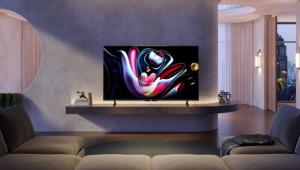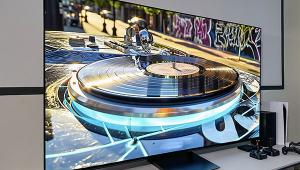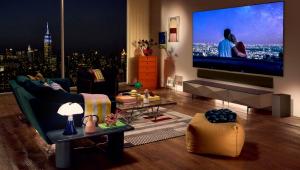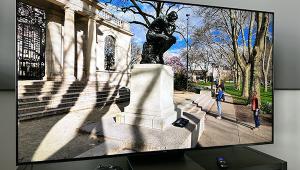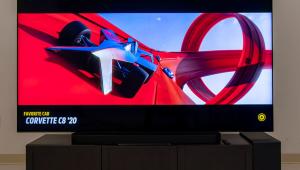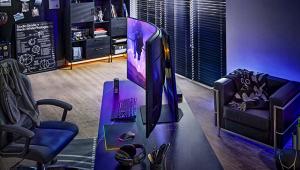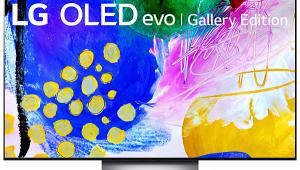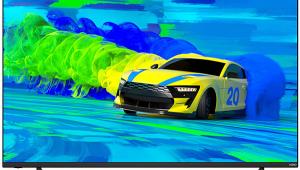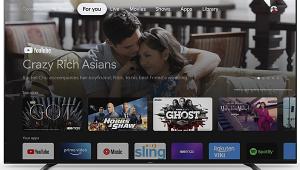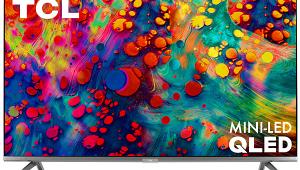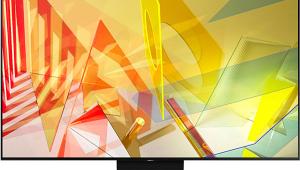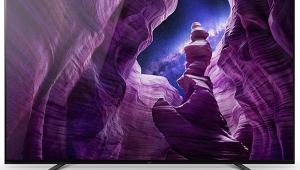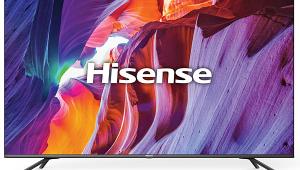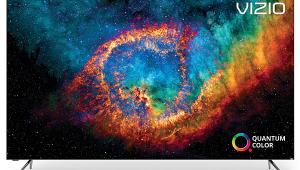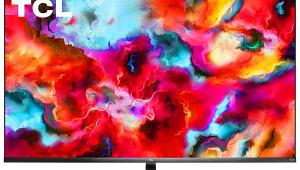OLED money and it's no better than a Samsung LED that costs $2000 less?
Sony XBR-65Z9D LCD Ultra HDTV Review Test Bench
Full-On/Full-Off Contrast Ratio: Unmeasurable
Measurements were made with SpectraCal CalMAN 2016 software, Photo Research PR-650 and Klein K-10A color meters, and pattern generators from AVFoundry (VideoForge, for 2K) and Murideo/AVPro (Fresco Six-G, for 4K/HDR).
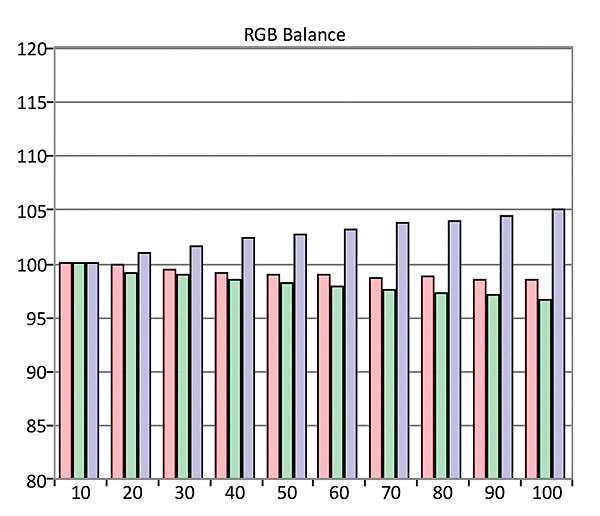

Except as noted, the measurements were performed with 1080p sources in SDR. With the Black level set to 50, Brightness (backlight) on 12, Contrast on 80, Gamma at –2, and Auto local dimming on Medium, an 18% white window measured peak white at 53.9 foot-lamberts, or 185 nits. Full-frame black was unmeasurable at center screen with these settings, even with a white pause bug displayed in the corner of the screen. But when I called up the picture adjustment menu, which fills much of the upper left-hand zone of the screen but not the middle, I measured a center black level of 0.001 ft-L with the Klein meter roughly 18 inches from the screen. This indicates that there was at least a little flare or blooming from the upper left menu spilling over onto the black at the center of the screen, though it was too low to see by eye. Black level can be said to be effectively unmeasurable.
In the Expert 1 Color temperature and the above settings (with Brightness scaled back for a peak white of 43.6 ft-L or 149 nits), the average pre-calibration grayscale Delta E varied from a min 1.18 at 20% to max 4.36 at 100%. Post-cal, the Delta Es varied 0.25 at 20% to 0.49 at 30%. The post-cal color Delta Es varied from a min 0.24 (cyan) to a max of 1.43 (magenta). Typical for Sony, the XBR-65Z9D has no color management system (CMS) for tweaking color points, but the default was exceptionally accurate.
(Delta E is a figure of merit indicating how closely the color matches the D65 HD standard at each point in the brightness range. Values below 3 to 4 are generally considered to be visually indistinguishable from ideal. Above 4 but less than 10, the image will be visibly changed, but generally in unobjectionable ways for most viewers.)
With Gamma set to –2 and Auto local dimming at Medium, gamma averaged 2.38.
Measuring HDR10 test patterns in the Sony’s Custom Picture mode default settings (apart from a small increase in the Black level to optimize it), the Z9D measured 1715 nits (511 ft-L) with a 10% window size, 1,433 nits (418 ft-L) with a 25% window, 945 nits (276 ft-L) at 50%, and 713 nits (208 ft-L) at 100%. Results that we’ve seen for similar measurements, from other sources, indicate that these numbers vary all over the map with different displays.

Other measured results in the default HDR settings weren’t perfect but more than acceptable when judged together with the Sony’s superb subjective HDR performance. The set put out the 29 ft-L (100 nits) at 50% brightness (one of the stated goals for HDR setup), and with a few small adjustments to the Adv. Color temperature control produced a respectable grayscale. But color gamut, measured against the P3 digital cinema standard, varied as the test pattern luminance increased. Red and green became marginally desaturated at higher luminance levels; blue was notice- ably overstaturated at low luminance and closer to correct at 100%. Magenta, up to 50% luminance, pushed strongly toward red (more like pink than magenta), but was much closer to correct at 75% and 100%. Again, the set has no color management system (CMS), but even if it did, such controls are usually limited to adjusting at one luminance level.
With my fully optimized HDR settings (Custom mode with minor changes from the defaults), these gamut variations were little changed. However, the peak white level with a 10% window dropped to 1,363 nits (397 ft-L), still an impressive figure, and the 10% white window luminance increased to 119 nits (34.8 ft-L) versus the desired number of 100 nits (29 ft-L).—TJN
- Log in or register to post comments

I would have to concur. Clearly, the fact still remains that unless some other significant technological breakthrough occurs and other than being a little brighter, there are and always be limitations to LCD/LED monitors in performance at a number of levels. In this case when Sony is placing its price level in the range of the current second to the top of the line LG OLED monitor with its superior blacks, off axis performance and both HDR10 and Dolbyvision already onboard, this monitor wouldn't even be a consideration for me and I already have an LG LCD/LED 4K monitor anyway.
I would have to say, once again, Sony missed the price point on this one. $3000-4000 maybe, $5500? no chance.

First, OLED is still in it's infancy and the reliability is a complete unknown. The fact that LG is the only manufacturer pursuing it makes its long term future questionable. Second, I'm not sure how good your settings where but they don't look anything like what I've seen in other reviews and on my own TV which looks nothing like any LCD TV I've ever seen- including the Samsung SUHD you're bragging about. Third, you really do not know what the actual picture was supposed to look like by the film creator, so adjusting settings to make it look good to you does in now way guarantee it is more accurate. Third, nobody does video processing better than Sony- NOBODY- and the panel itself is only half of the story, video processing is the other half, and Sony is light years ahead of Samsung and LG, let alone Vizio and the rest of the Chinese manufacturers. Anyone whose considering this set should read reviews on other sites, Samsung may come close, but still, like I said, video processing trumps all!!

The reason other companies aren't doing OLED is that LG bought the patents for White OLED from Kodak and is the only one that can do it. Samsung and others have to do traditional RGB OLED cells, which is currently too hard to do at scale compared to the WOLD that LG can do. It's not that nobody wants to do it, it's that nobody can do it efficiently and LG isn't licensing out the patent.

That's even more reason to doubt the future of the technology- Historically, Proprietary tech hasn't gone too far or become ubiquitous which is the minimum requirement for a technology to take hold and proliferate, otherwise prices will keep it out of the long term competition. Not many people can afford premium pricing.

Thank you for an honest review of the Z9D! Seems like it was a LONG time coming and I've been wondering why there were so few 'real' reviews. Although I have some issues with my OLED, and I've recently considered exchanging it for a Z9D, I think this review combined with some of the Z9D issues I've seen on the forums, have convinced me to stay with my OLED -- at least for now. Honestly, this TV seems fantastic, and I'm sure I'd love it, especially if the processing makes crappy cable look a little better than it does with OLED! But it seems like I'd be trading one set of shortcomings for another whole, different, set of problems. Think I'll just watch TV, revel in the things my OLED does very well, and forget about trying to have perfection, which ain't gonna happen anytime soon. Thanks again for the review! Very helpful.

The Sony Z9D 65"screen is overpriced, however the 75" screen size is competitively priced.
Everyone has already chimed in on Z9D vs. OLED pricing.
However if you spend some time viewing top end models at 75" Sony Z9D ($9,000), Samsung 78 UN9800 ($9,000) and LG G6P 77'( a whopping $20,000).
You will be surprised and the fact that as an overall display the Z9D beats them in price and in Picture quality (overall, means great for Day time football game viewing in a lighted living room; Gaming; and darken room movie viewing).
OLED's are great for movie viewing in a darkened room, but the brighter the room the lesser their visual impact. In addition, ask all the frustrated gamers who own OLED's, who do indeed play their online games on a darken room, but the lag time for OLED's is poor.
Samsung 9800 is spectacular, in a well lit room. Colors will pop out.
Sony Z9D will beat Samsung in a darken room,come close to matching OLED in a darken room, and finally color accuracy and processing is fantastic.
Both Z9D and the LG OLED do a fair to good job on 3D movies (it still matters to many of us), while Samsung jumped ship on 3D. Which is inexcusable for their top of the line model.
As I stated at the start of my comments, the 65" Sony Z9D is indeed overpriced vs. Samsung 9800 and LG E6 at 65".
However at 75" the Z9D is the better choice among these three displays.
If I were to do all my viewing in an exclusive darken room then an LG 77G6P might be the better choice, but at $20,000 its utterly overpriced.
If I could afford $20,000 then a Sony 4k Projector ($15,000 retail) and a Stewart 100" high gain screen ($5,000) would be the far better option.

I have purchased Sony TVs exclusively since 1978 and had my newest purchase a XBR55X930D delivered Thurs. Well Sony forgot to include the screws to attach the stand. Sony's customer service wanted a copy of my purchase receipt before they would send me the screws. Like who is going to rip off Sony for $3.15 which what they cost on their website. They had issues with my receipt from my on line purchase from Best Buy. Finally they sent the screws but they were too cheap to overnight them. Great job Sony. and Worst Buy sorry best Buy was no help. Maybe I should have spent the extra money for a LG OLED! I never buy another Sony product.

I just got a 75x940D, one step down in Sony's line from the Z9D. Love it so far, blacks are INCREDIBLE. I know, not as good as OLED, but for 1/5th the price of the 77" LG OLED, it's pretty damn good.
I will get a pro calibration after it's broken in for a couple months but wondering how well you think the settings you published for the Z9D would work on the 940D. Right now I know my settings are off. I used the settings from the 65X930D review as a start and tweaked with the Spears and Munsil disc. Great blacks but WAY too bright, and color is noticeably off, too much yellow.
I'm going to put in these settings and see what it looks like.

I bought this 75' Sony late spring 2017 after I found out Sony had dropped 3D from its 2017 line. My choice came down to the Z9D and 2016 LG OLED G6P which also displayed 3D. While the 65" prices were comparable, the 77" LG was $20K. That made the choice simple. The Z9D may not have a black level to match todays OLEDs, but it outperforms any of todays LCD sets, supports Dolby Vision, and still does 3D! There's nothing better than good 3D on a 4K TV. I've also read several reports of the LG G6P's 3D mask failing with no replacements available. If you can still find a Z9D grab it. You won't be disappointed.

The Custom picture mode on the Sony Z9D has a brightness limit and does not support tone mapping. Its main use is for studio monitoring. If you set up your Z9D as described in the S&V review, swap the Custom and Cinema Pro settings (the brightness limit does not affect SDR). Another change I made to the S&V settings was to reduce the Black Level back to the default 50 setting for HDR because on my set it turned normally black bars a dark grey. I can't tell if this results in some black crush, but the grey bars were distracting. Also the screen would not go completely black like it does with SDR material.

Playing Super Mario on a big TV screen is an absolute delight! With its vibrant colors and immersive gameplay, the iconic adventures of Mario and his friends come to life like never before. Experience the nostalgia and excitement of classic gaming in a whole new way. Dive into the world of Super Mario on your big screen and let the fun begin!
Play Super Mario Wonder online now: https://iogamesio.com/super-mario-wonder/

